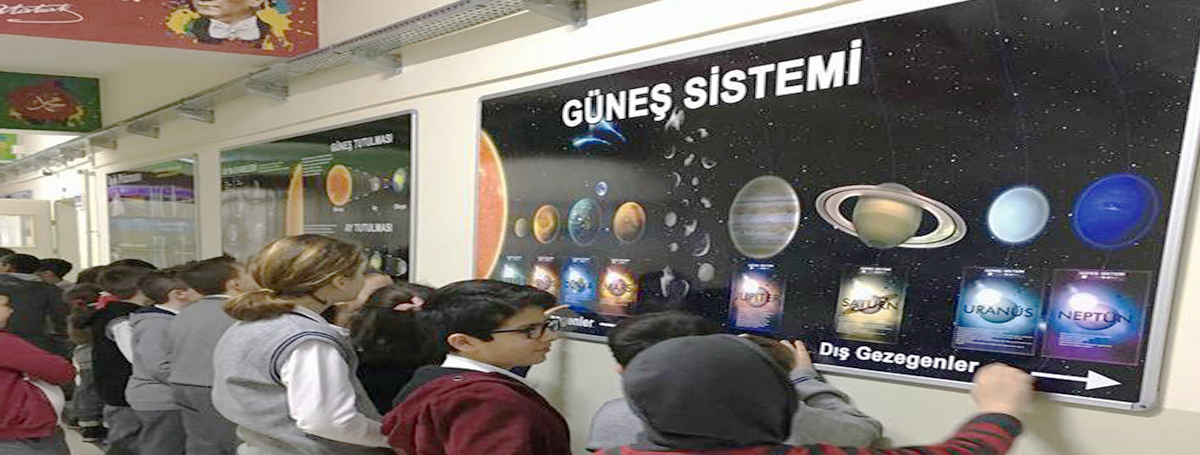
Throughout the Ottoman Empire, a key goal of education was to raise 'good Muslims'. Therefore there was a requirement for Islamic scholars, which was sustained through Islamic Faith Schools, called Madrasa.In 1913, the Medresetü-l Eimmeti vel Hutaba (School of ministers and preachers Medresetü-l Vaazin were integrated to form the tangible origins of today's Imam Hatip high schools
In 1924, the Tevhid-i Tedrisat (Law of Unification of Educational Guideline was passed, changing the existing, mostly sectarian academic system with a nonreligious, centralist and nationalist education one. The brand-new law brought all universities under the control of the Ministry of National Education. A Faculty of Theology at the Darülfünun (Istanbul University), unique schools for training imams and hatips (ministers and preachers) were opened by the brand-new Ministry of National Education. Nevertheless, in 1930 İmam Hatip schools were closed and 1933 the Professors of Divinity was eliminated.
In contrast to the solely secularist nature of the education policy of the Republican Individuals's Celebration (CHP) spiritual education was renewed in 1948. This consisted of the establishment of a Professors of Faith at the University of Ankara in 1949. Very first actions for the establishment of Imam Hatip schools began in 1951 under the Democrat Celebration federal government, which established 7 special secondary schools (Imam Hatip Okulları). In addition, in 1959 Islamic Institutes were opened for graduates of Imam Hatip schools.
Following the coup d'etat in 1960, Imam Hatip schools came across the threat of closure. Following the return to civilian politics and the intro of the brand-new constitution in 1961, graduates of Imam Hatip schools might only enrol in university programmes if they had passed courses used at nonreligious schools. Throughout the premiership of Süleyman Demirel however, graduates of Imam Hatip schools were admitted to university without such requirements. The 1971 Turkish coup d'état introduced two essential reforms: firstly junior high Imam Hatip schools were eliminated, and in 1973 Imam Hatip schools were relabelled as Imam Hatip high schools. Under the subsequent National Education Basic Law, Imam Hatip schools were specified as occupation schools, where students were to be trained as preachers and ministers or gotten ready for college.
Imam Hatip schools grew gradually initially, however their numbers broadened quickly to 334 throughout the 1970s. The union government of 1974, established by the CHP and the MSP (National Redemption Celebration), devoted to resume junior highs and offering the right of entry to university through examination. 230 brand-new Imam Hatip high schools were opened in a duration of nearly four years. During the 1974-75 school year the variety of students addressing the Imam Hatip high schools grew to 48,895. This number subsequently grew to 200,300 by 1980-81. In addition, women acquired the right of entry to Imam Hatip high schools in 1976. The proliferation of Imam Hatip high schools is typically cited as the result of the National Salvation Celebration's membership of a variety of coalitions with Nationalist Front governments.
Situation considering that 1980
The coup d'etat of September 12, 1980 is an important turning point in the history of Turkey and also for the history of Ä°mam-Hatip high schools. Under military governance, graduates of Imam Hatip high schools gained the right of entry to all university departments. In 1985, two brand-new Imam Hatip high schools opened, one in Tunceli, despite of the so-called ethnic structure of the region, and the other in Beykoz as an Anatolian Imam Hatip High School, with the objective of adding to the education of kids of families who work abroad. Although the variety of Imam Hatip high schools had actually not increased given that, the number of students participating in Imam Hatip high schools has increased by 45%. This is partially due to the enhancement in the quality of Imam Hatip high schools and the education offered at such schools.
Throughout the education year of 1973-74, the overall variety of Imam Hatip students was 34,570; in 1997 this number had dramatically increased to reach 511,502. Along with this massive increase in appeal, the variety of schools also increased. The number of Imam Hatip junior high schools reached 601 and senior high schools 402. The boost in both trainee and school numbers can be associated to factors including the dedication of people to faith, dorm centers, scholarships, the admittance of females and a boost in demand for religious education.
Research study recommends that in between the years of 1993 and 2000, prospective students registered at Imam Hatip high schools mostly to receive spiritual tutoring alongside a more general education.In Additional resources addition, research study reveals enrolment at Imam Hatip high schools was based solely on the trainee's choice. The 3rd suggested element in the rise in popularity of Imam Hatip schools is the admission of female students in 1976. By 1998, almost 100,000 women attended Imam Hatip high schools, comprising almost half of all students. This figure is particularly exposing because ladies are not eligible to become either priests or ministers.
However, the introduction of 8 years of obligatory education in 1997 has actually seen an unexpected decrease in the popularity of Imam Hatip schools. In 1999, the reclassification of Imam Hatip schools as "employment schools" indicated that, although more choices had been made offered to graduates, obtaining locations at prestigious university courses ended up being more difficult.By requiring that all 8 obligatory years of education be spent under the same primary-school roof, middle schools were abolished. Children could not enter professional schools (among them the Imam Hatip school) up until the ninth grade (rather than the sixth, as before).